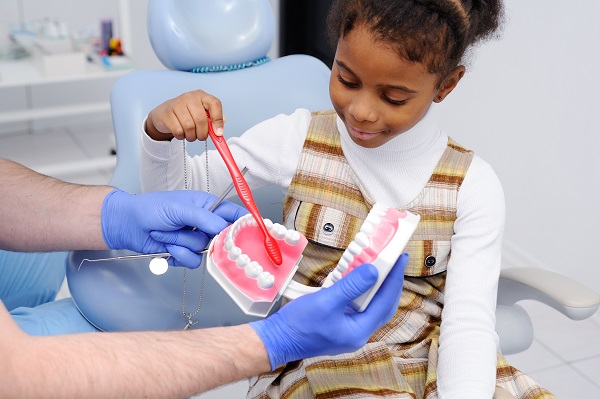A Children’s Dentist Answers Pediatric Dental Fillings FAQs

Tooth decay is the most common dental problem that affects children, so a children's dentist spends a large share of their time treating tooth decay. Fluoride treatments can be used to treat the first stage of decay: the demineralization stage. However, dental fillings are needed once cavities start forming on the tooth.
Our children's dentist goes over frequently asked questions about pediatric dental fillings
Think your child might need dental fillings? Let us go over the answers to some of the questions you might have:
1. How do children's dentists know if a dental filling is necessary?
The first step is to assess the severity of the decay. This will be done by taking x-rays and/or using a special dental instrument called an explorer to check for cavities. If the decay is found to be in its early stages, a fluoride treatment may be all that is needed. However, dental fillings will be necessary if the decay has progressed to the point where cavities have formed.
2. What types of materials are used for pediatric dental fillings?
The most common dental filling used for children is a composite (tooth-colored) filling. Composite fillings are made of a resin material that can be matched to the color of your child's teeth. It is made from mixtures of plastic and glass. This type of filling is less noticeable than other types of fillings and can be used on both front and back teeth.
Another type of dental filling used for children is an amalgam (silver) filling. Amalgam fillings are made of a mixture of metals, including silver, copper, tin, and mercury. While amalgam fillings are not as popular as they once were, they are still an option for children who need them. The decision of which type of dental filling to use is based on several factors like the location and seriousness of the decay, the child's age, and the child's personal preference.
3. How are pediatric dental fillings placed?
The first step is to anesthetize the area around the tooth so the child will not feel any pain during the procedure. Once the area is numb, the pediatric dentist will remove the decay from the tooth and clean it out. The next step is placing the filling material into the cavity and shaping it. Once the filling is in place, it is hardened with a special light.
After the filling is placed, your child may complain about increased sensitivity to hot and cold temperatures for a few days. This is typical and should go away within a week or two.
4. How long do dental fillings last?
With appropriate care, dental fillings can last for over five years. Brushing regularly and seeing a children's dentist for regular checkups are essential, so any problems with the filling can be caught early.
Fillings stop decay in its tracks
Do not hesitate to contact our office to set up an appointment with our pediatric dentist if you think your child may need a dental filling.
Request an appointment here: https://www.grandparkwaypediatricdental.com or call Grand Parkway Pediatric Dental at (832) 579-0960 for an appointment in our Richmond office.
Check out what others are saying about our services on Yelp: Childrens Dentist in Richmond, TX.
Recent Posts
Dental fillings for kids restore the smile for years to come. Proper aftercare and consistent oral hygiene help to ensure your child gets the most out of their fillings. Thankfully, caring for these restorations is simple and straightforward, particularly with the help of a pediatric dentist.A dental filling is a dental restoration that “fills” cavities…
Children's tooth care starts long before the first toothache, and thoughtful care helps prevent sensitivity and protect growing smiles. When toothaches or sensitivity appear, they cause worry for children and parents, but clear guidance and prompt care keep problems from escalating.Toothaches signal that something in the mouth needs attention. In children, discomfort may show up…
Dental fillings for kids provide many advantages. It is natural for parents to ensure their children’s comfort. Fillings can improve a decayed tooth’s function and appearance. It can also keep more dental decay at bay. Here are the details on how dental fillings for kids can prevent dental decay from worsening.All parents want their children…
Dental fillings for kids are crucial in preventing many dental issues. Baby teeth can develop cavities. Correcting this problem is important for developing permanent teeth. Here are the details on how preventive dentistry uses dental fillings for kids.Research shows that many school-age kids suffer from cavities. This disease is common even if it is preventable.…


